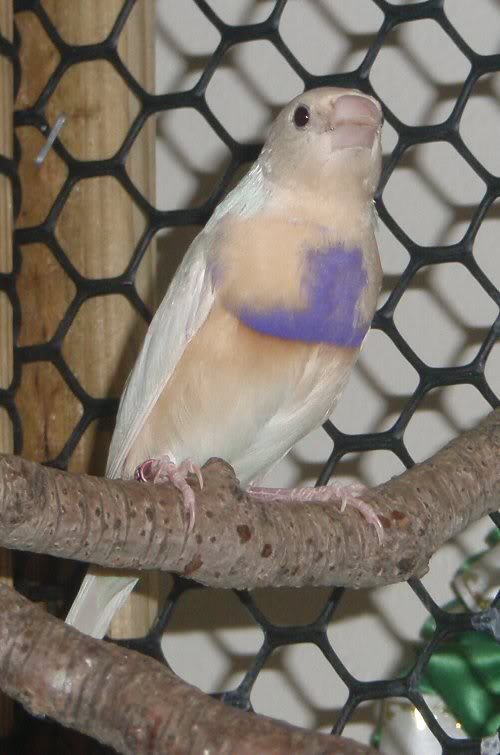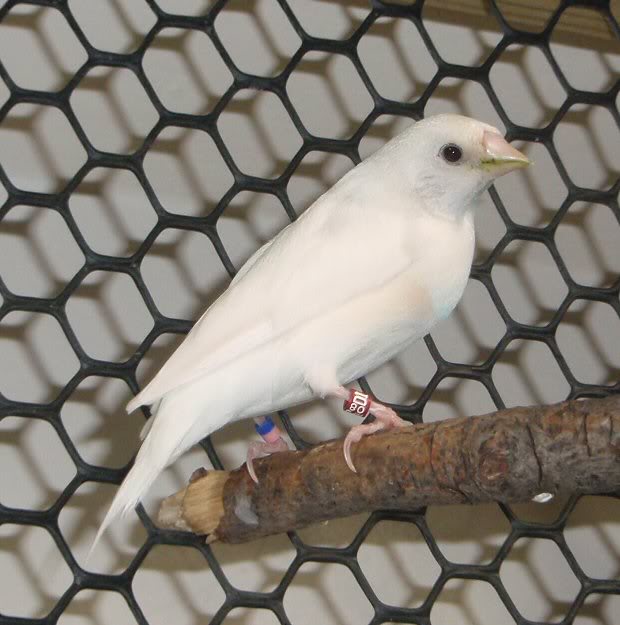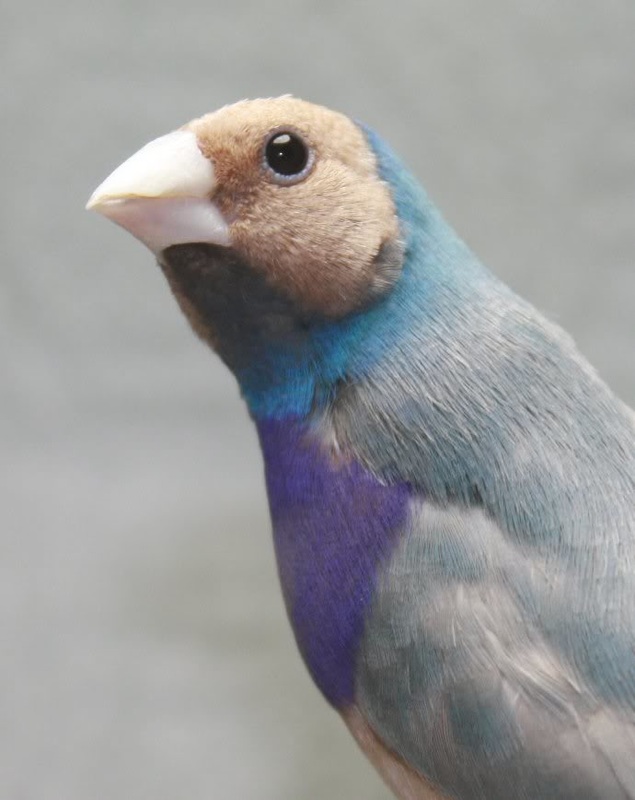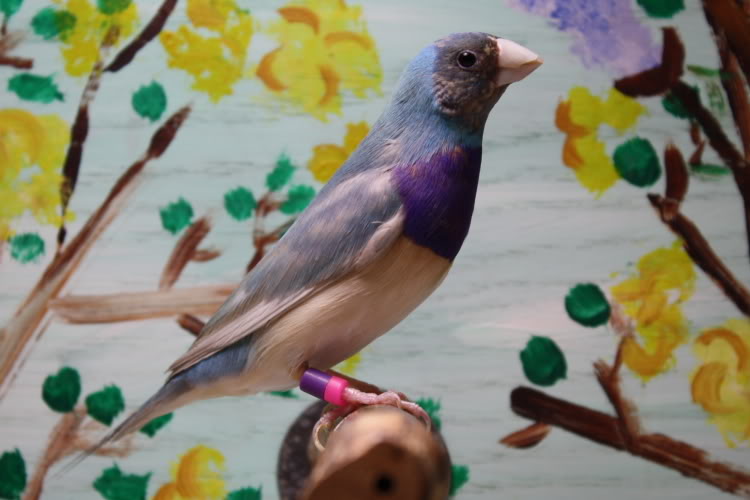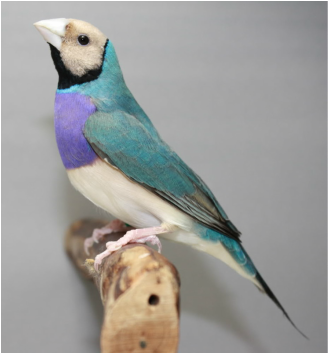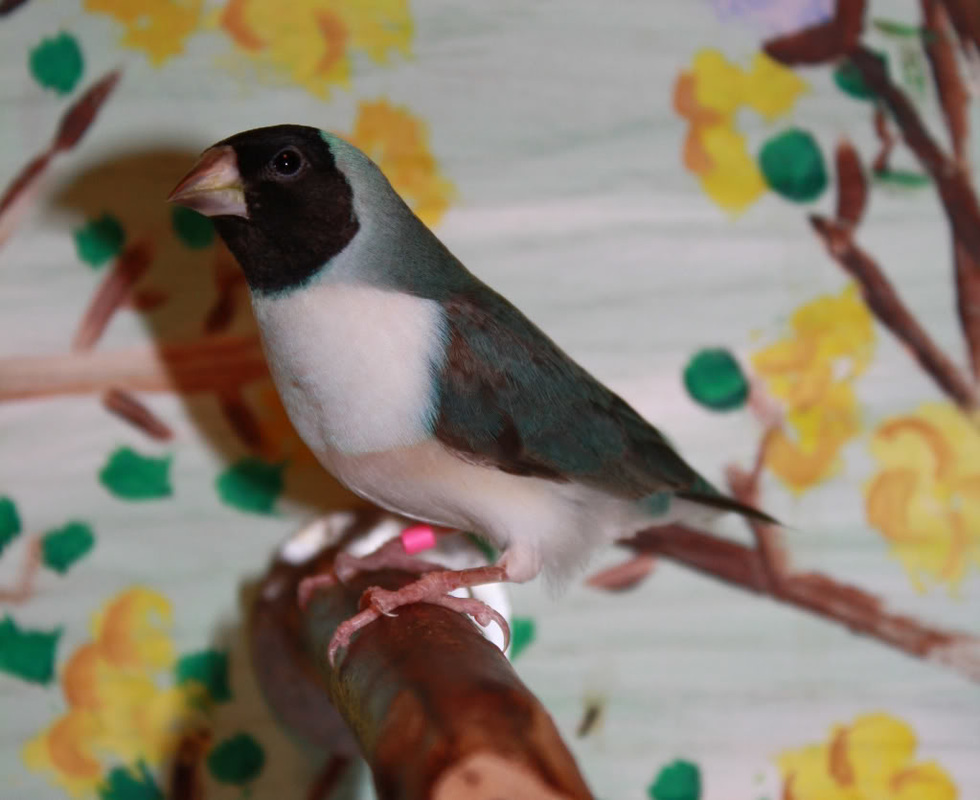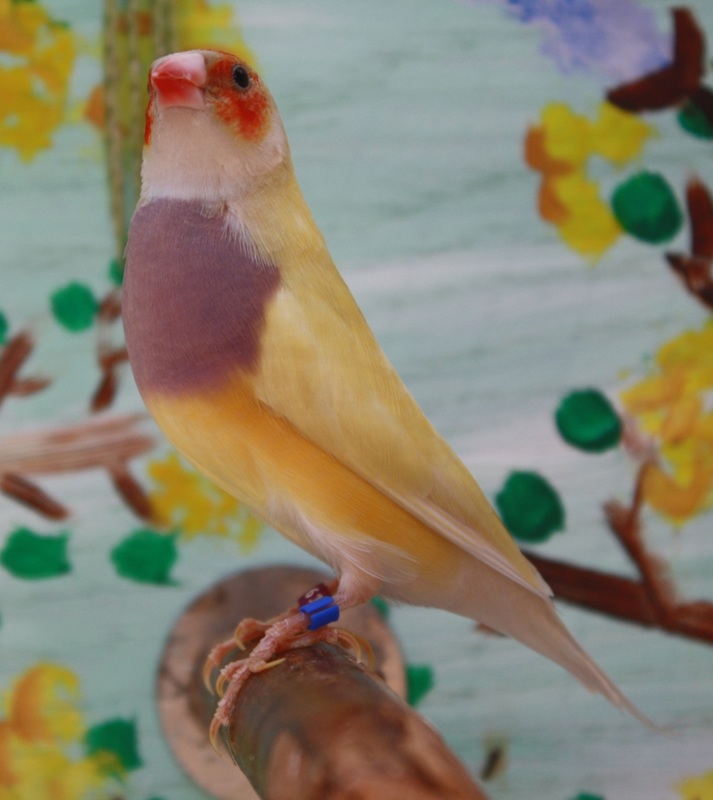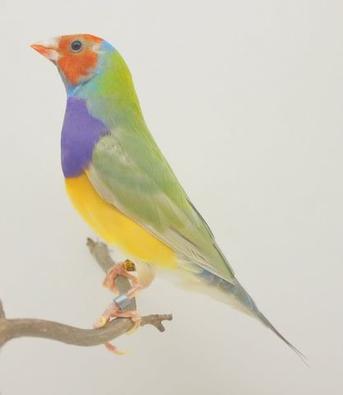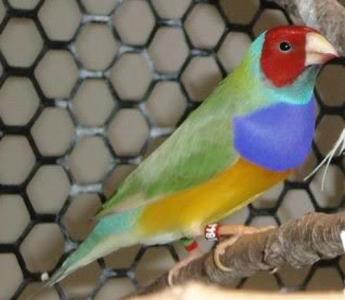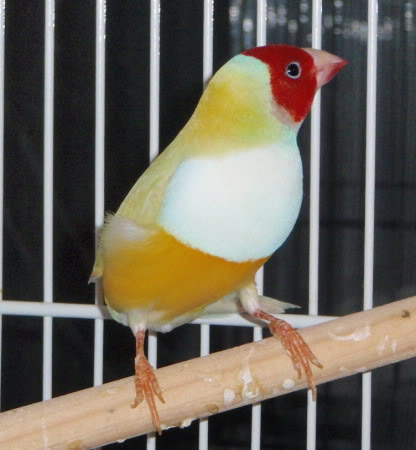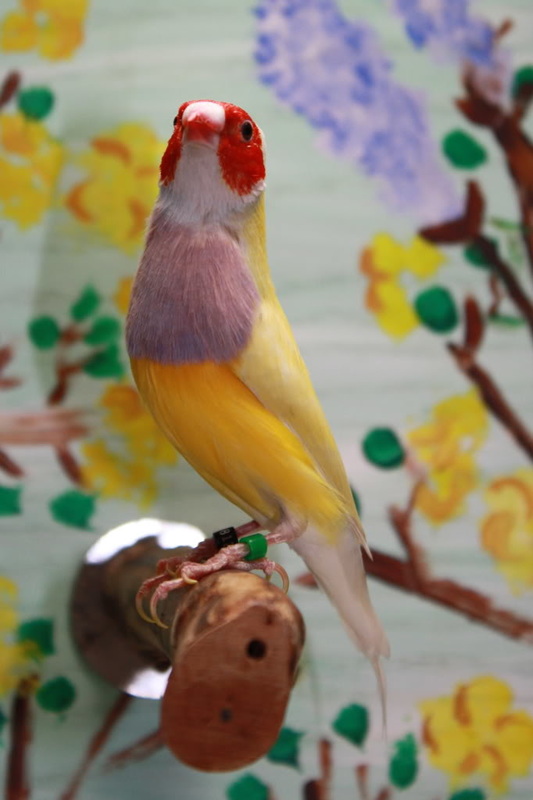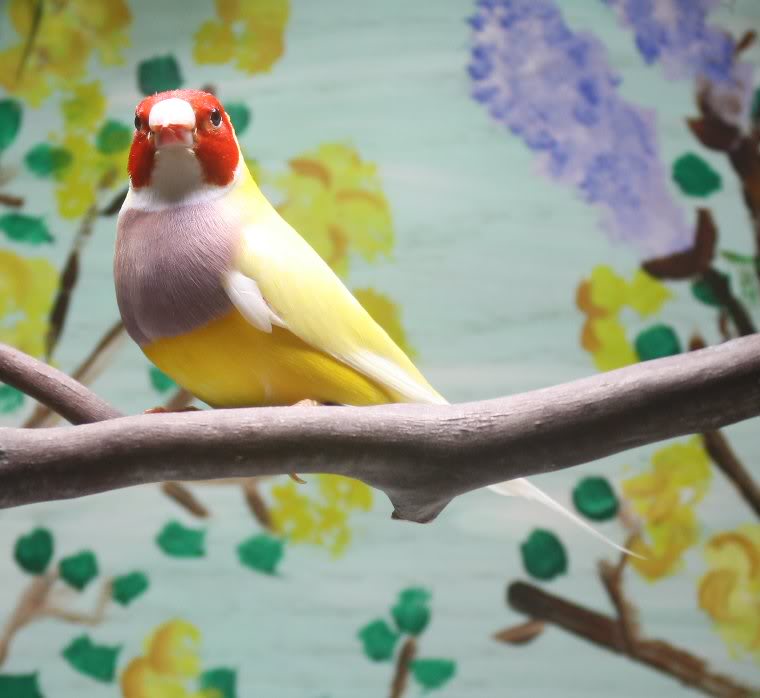Reverse Genetics
The following article was written by me. It was published with my permission in the National Finch & Softbill Society Journal
As many who have bred or are breeding Gouldians likely knows, there are a few different computer programs available out there which forecast the genetic possibilities of offspring depending upon what two birds are paired together. The purpose being to determine what mutations the pair can possibly produce and thus influence the likelihood of producing a specific body color mutation.
What happens if you are simply not sure, however, how to achieve a specific body color mutation? I.e., You are not sure what is necessary to be present in order to produce the specific color mutation, so you are not sure which birds must be paired together to start. I frequently have individuals contact me asking what is the best way to produce “such and such” mutation, and these individuals usually have a specific goal in mind, and they want to know - what two birds should I pair together in order to get my goal bird?
This is where reverse genetics comes in. Reverse genetics can be quite tricky if you do not understand the basic mechanisms at play with Gouldian genetics. You have to have a firm grasp on how the mutations are produced to go backwards and determine what you need to pair to them re-produce those mutations. This article will only discuss Body Color.
A few important points to note:
1. The pairings below will not necessarily only produce the specified mutation bird. There are many other possibilities each pairing could produce. These are merely examples of what pairings are capable of producing said bird. Statistics are a funny thing, and their accuracy is usually dependent upon large numbers of results. So if you have one pair producing 4 babies each clutch, there is a possibility that the first clutch will not contain the baby you are looking for!
2. You generally need to have some background knowledge of the birds you intend to pair together in order to successfully achieve the results you are looking for. Meaning, if you have no idea if your pair carries the blue mutation, you can’t expect to produce genetically blue birds.
3. I belong to the camp of people who believe blue bodied birds (blues, pastels, silvers) should not be paired together. I realize there are many individuals who do not see a problem with this, so I will note that this is my personal opinion. To be comprehensive, this list includes all possibilities, but I have starred those I would discourage.
For specific inquiries, you can always email me!
I'll start with the more exotic mutations, since that is what most people seem to be interested in.
REMEMBER: The pairings below will not necessarily only produce the specified bird. There are many other possibilities each pairing could produce. These are merely examples of what pairings are capable of producing said bird. Statistics are a funny thing, and their accuracy is usually dependent upon large numbers of results. So if you have one pair producing 4 babies each clutch, there is a possibility that the first clutch will not contain the baby you are looking for! Check out "Body Color Pairings" if you would like to know all of the potential offspring a particular pairing below could produce.
What happens if you are simply not sure, however, how to achieve a specific body color mutation? I.e., You are not sure what is necessary to be present in order to produce the specific color mutation, so you are not sure which birds must be paired together to start. I frequently have individuals contact me asking what is the best way to produce “such and such” mutation, and these individuals usually have a specific goal in mind, and they want to know - what two birds should I pair together in order to get my goal bird?
This is where reverse genetics comes in. Reverse genetics can be quite tricky if you do not understand the basic mechanisms at play with Gouldian genetics. You have to have a firm grasp on how the mutations are produced to go backwards and determine what you need to pair to them re-produce those mutations. This article will only discuss Body Color.
A few important points to note:
1. The pairings below will not necessarily only produce the specified mutation bird. There are many other possibilities each pairing could produce. These are merely examples of what pairings are capable of producing said bird. Statistics are a funny thing, and their accuracy is usually dependent upon large numbers of results. So if you have one pair producing 4 babies each clutch, there is a possibility that the first clutch will not contain the baby you are looking for!
2. You generally need to have some background knowledge of the birds you intend to pair together in order to successfully achieve the results you are looking for. Meaning, if you have no idea if your pair carries the blue mutation, you can’t expect to produce genetically blue birds.
3. I belong to the camp of people who believe blue bodied birds (blues, pastels, silvers) should not be paired together. I realize there are many individuals who do not see a problem with this, so I will note that this is my personal opinion. To be comprehensive, this list includes all possibilities, but I have starred those I would discourage.
For specific inquiries, you can always email me!
I'll start with the more exotic mutations, since that is what most people seem to be interested in.
REMEMBER: The pairings below will not necessarily only produce the specified bird. There are many other possibilities each pairing could produce. These are merely examples of what pairings are capable of producing said bird. Statistics are a funny thing, and their accuracy is usually dependent upon large numbers of results. So if you have one pair producing 4 babies each clutch, there is a possibility that the first clutch will not contain the baby you are looking for! Check out "Body Color Pairings" if you would like to know all of the potential offspring a particular pairing below could produce.
Guide to Abbreviations
RH, BH, OHRed Head
Black Head Orange Head SF, DF, /Single Factor
Double Factor Indicates a split or recessive color is present. I.e., Normal/Blue - Normal split for Blue Body; Purple/White - Purple split for White Breast |
PB, LB, WBPurple Breast
Lilac Breast White Breast N, Y, BNormal
Yellow Blue |
|
Silver FemalesSilver hens are a bit less complex than silver males. Due to yellow being sex-linked, hens only need one copy to express the yellow body color [which they inherit from their father, not their mother]. This means that there is no requirement for them to be DF Yellow + Blue bodied to express the silver color. It also means that the only pertinent genetic information they receive from their mother revolves around the blue body mutation. In short: All you need for a Silver hen is a genetically yellow blue bodied bird
The following pairings can produce Silver hens:
Silver Male x Silver Hen* Silver Male x Blue Hen* Silver Male x Yellow/Blue Hen Silver Male x Normal/Blue Hen Pastel Male x Silver Hen* Pastel Male x Blue Hen* Pastel Male x Yellow/Blue Hen Pastel Male x Normal/Blue Hen DF Y/B Male x Silver Hen DF Y/B Male x Blue Hen DF Y/B Male x Y/B Hen DF Y/B Male x N/B Hen SF Y/B Male x Silver Hen SF Y/B Male x Blue Hen SF Y/B Male x Y/B Hen SF Y/B Male x N/B Hen *These pairings are not recommended. |
|
Blue Bodied BirdsBlue is an autosomal recessive mutation. To put it in every day terms: to be visually Blue, a bird must inherit one copy of the blue body gene from both parents. Thus, at the very least, both parents must be split for blue body in order to produce blue bodied chicks.
The following pairings can produce Blue Males:
Silver [only if he is SF Y] Male x Blue Hen* Silver [only if he is SF Y] Male x N/B Hen Blue Male x Blue Hen* Blue Male x N/B Hen Pastel Male x Blue Hen* Pastel Male x N/B Hen Dilute [SF Y]/Blue Male x Blue Hen Dilute [SF Y]/Blue Male x N/B Hen N/B Male x N/B Hen N/B Male x Blue Hen *These pairings are not recommended. The following pairings can produce Blue Hens:
Silver [only if he is SF Y] Male x Silver Hen* Silver [only if he is SF Y] Male x Blue Hen* Silver [only if he is SF Y] Male x Y/B Hen Silver [only if he is SF Y] Male x N/B Hen Blue Male x Silver Hen* Blue Male x Blue Hen* Blue Male x Y/B Hen Blue Male x N/B Hen Pastel Male x Silver Hen* Pastel Male x Blue Hen* Pastel Male x Y/B Hen Pastel Male x N/B Hen Dilute [SF Y]/Blue Male x Silver Hen Dilute [SF Y]/Blue Male x Blue Hen Dilute [SF Y]/Blue Male x Y/B Hen Dilute [SF Y]/Blue Male x N/B Hen N/B Male x Silver Hen N/B Male x Blue Hen N/B Male x Y/B Hen N/B Male x N/B Hen *These pairings are not recommended. |
Producing birds that are guaranteed Split for Blue [/Blue] is as simple as pairing a genetically Blue bodied bird to any other bird that is not visually blue!
|
Yellow HensYellow is a sex-linked gene, so therefore females need only inherit one copy [again, which they inherit from their father] to visually appear yellow. The body color of the mother therefore does not particulary matter, so it is not necessary to list out the various combinations of hens to pair to the males below. Just understand that "Any Hen" literally means any hen.
The following pairings can produce Yellow Hens: Silver [DF or SF] Male x Any Hen Pastel Male x Any Hen DF Yellow Male x Any Hen [!Best Choice! - All hens produced will be Yellow] Dilute [SF Y] Male x Any Hen |
SF Yellow MalesSF Yellow males exist in two varieties. The first are the "Dilutes" as they are called, which are genetically SF Yellow birds that are also purple breasted. The second are what I call "SF Yellow Males". These are genetically SF Yellow, with a Lilac or White Breast, thus appearing visually yellow like their DF counterparts.
The following pairings can produce Dilute [SF Yellow, PB] Males: Silver [SF Y only] x Yellow Hen Silver [SF or DF Y] x Normal Hen Pastel x Yellow Hen Pastel x Normal Hen Blue Male x Yellow Hen DF Yellow x Blue Hen DF Yellow x Normal Hen [!Good Choice! - All males produced will be Dilute] SF Yellow x Silver Hen SF Yellow x Blue Hen SF Yellow x Yellow Hen SF Yellow x Normal Hen Normal Male x Silver Hen[!Good Choice! - All males produced will be Dilute/Blue] Normal Male x Yellow Hen[!Good Choice! - All males produced will be Dilute] It is necessary to explain that the above pairings assume both birds are not Lilac or WB. If one is Purple/White or Purple/Lilac, you will still get visual Dilutes. If pairing two splits together, you will get some visual Dilutes, and some SF Yellow, non PB, visually yellow males. The above pairings would not work to produce visual Dilutes if both parents are visually Lilac or White Breast. That is what the following section is for! The following pairings can produce SF Yellow [Visually Yellow, Lilac or WB] Males:
"P/-" means a Purple/White or Purple/Lilac Bird. P/-, LB or WB Silver [SF Y only] x P/-, LB or WB Yellow Hen P/-, LB or WB Silver [SF or DF Y] x P/-, LB or WB Normal Hen P/- Pastel x P/-, LB or WB Yellow Hen P/- Pastel x P/-, LB or WB Normal Hen P/-, LB or WB Blue Male x P/-, LB or WB Yellow Hen P/-, LB or WB DF Yellow x P/-, LB or WB Blue Hen P/-, LB or WB DF Yellow x P/-, LB or WB Normal Hen P/-, LB or WB SF Yellow x P/-, LB or WB Silver Hen P/-, LB or WB SF Yellow x P/-, LB or WB Blue Hen P/-, LB or WB SF Yellow x P/-, LB or WB Yellow Hen P/-, LB or WB SF Yellow x P/-, LB or WB Normal Hen P/-, LB or WB Normal Male x P/-, LB or WB Silver Hen P/-, LB or WB Normal Male x P/-, LB or WB Yellow Hen |
DF Yellow MalesIn order to produce DF Yellow Males, the bird needs to inherit one copy of the yellow gene from its mother, and one from its father. This means at the very least you need a SF Yellow male x Yellow hen.
The following pairings can produce DF Yellow Males: Silver [DF or SF] Male x Silver Hen* Silver [DF or SF] Male x Yellow Hen Pastel Male x Silver Hen* Pastel Male x Yellow Hen DF Yellow Male x Silver Hen DF Yellow Male x Yellow Hen [!Best Choice! - All males produced will be DF Yellow] Dilute [SF Y] Male x Silver Hen Dilute [SF Y] Male x Yellow Hen *These pairings are not recommended. |
